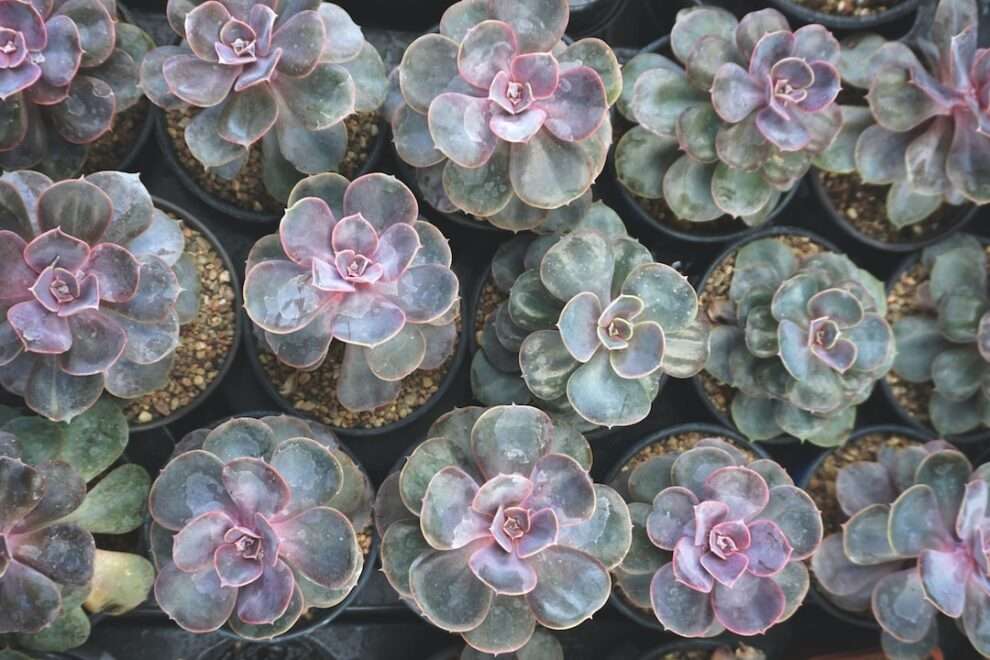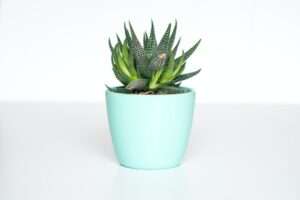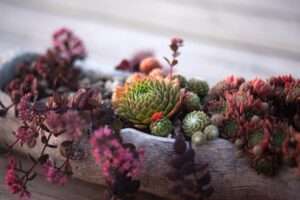Succulents are a type of plant that have thick, fleshy leaves and stems that store water. They are known for their ability to survive in arid conditions and require very little maintenance. Succulents come in a wide variety of shapes, sizes, and colors, making them a popular choice for both indoor and outdoor gardens.
One of the reasons why succulents have gained popularity in recent years is their unique and eye-catching appearance. Their thick, fleshy leaves and interesting shapes make them stand out among other plants. Additionally, succulents are relatively easy to care for, making them a great choice for beginners or those with busy lifestyles. They require very little water and can tolerate a wide range of temperatures, making them a versatile option for any climate.
Choosing the Right Soil and Pot for Succulent Growth
Choosing the right soil and pot is crucial for the health and growth of succulents. Succulents require well-draining soil to prevent root rot and other issues caused by excess moisture. A good succulent soil mix should be made up of a combination of organic matter, such as compost or peat moss, and inorganic matter, such as perlite or sand. This will ensure that the soil is able to retain some moisture while also allowing excess water to drain away.
When it comes to choosing a pot for your succulents, it’s important to consider both aesthetics and functionality. Terracotta pots are a popular choice for succulents because they are porous and allow excess moisture to evaporate. However, they can also dry out quickly, so it’s important to monitor the moisture levels in the soil. Ceramic pots are another option, as they come in a variety of colors and designs that can add visual interest to your succulent display. Just make sure that the pot has drainage holes to allow excess water to escape.
Watering Techniques for Succulents: How Much is Too Much?
One of the most common mistakes people make when caring for succulents is overwatering. Succulents are adapted to survive in dry conditions and can actually rot if they are given too much water. The frequency of watering will depend on factors such as the climate, the size of the pot, and the type of succulent. As a general rule, it’s best to wait until the soil is completely dry before watering again. This can range from once a week to once every few weeks, depending on the conditions.
Signs of overwatering include yellowing or wilting leaves, mushy stems, and a foul smell coming from the soil. If you notice any of these signs, it’s important to adjust your watering routine and allow the soil to dry out before watering again. On the other hand, underwatering can also be detrimental to succulents. Signs of underwatering include shriveled leaves, a wrinkled appearance, and slow growth. If you notice any of these signs, it’s important to increase your watering frequency.
The Importance of Sunlight for Succulent Growth
Succulents thrive in bright, indirect sunlight. They require at least six hours of sunlight per day to maintain their vibrant colors and compact growth. However, it’s important to protect them from intense afternoon sun, as this can cause sunburn and damage their leaves.
If you’re growing succulents indoors, it’s important to provide them with adequate sunlight. Place them near a south-facing window where they can receive bright, indirect sunlight throughout the day. If you don’t have access to a sunny window, you can also use artificial grow lights to provide the necessary light for your succulents.
Fertilizing Succulents: What You Need to Know
Succulents are not heavy feeders and do not require frequent fertilization. However, providing them with the right nutrients can help promote healthy growth and vibrant colors. When it comes to fertilizing succulents, it’s important to choose a fertilizer that is specifically formulated for cacti and succulents. These fertilizers are typically low in nitrogen and high in phosphorus and potassium, which are essential for root development and flowering.
It’s best to fertilize succulents during their active growing season, which is typically in the spring and summer. Follow the instructions on the fertilizer packaging for the correct dosage and frequency. Over-fertilizing can lead to nutrient burn and damage the roots of the succulent, so it’s important to use fertilizers sparingly.
Pruning and Propagating Succulents: Tips for Healthy Growth
Pruning and propagating succulents are important for maintaining their shape and promoting healthy growth. Pruning involves removing dead or damaged leaves, as well as trimming back overgrown stems. This helps to improve air circulation and prevent the spread of diseases.
Propagating succulents is a fun and rewarding way to expand your collection. There are several methods of propagation, including leaf cuttings, stem cuttings, and division. Leaf cuttings involve removing a healthy leaf from the parent plant and allowing it to dry out before planting it in well-draining soil. Stem cuttings involve cutting a healthy stem from the parent plant and allowing it to dry out before planting it in soil. Division involves separating a clump of succulents into smaller plants.
Common Pests and Diseases that Affect Succulents and How to Deal with Them
Succulents are generally resistant to pests and diseases, but they can still be affected by certain issues. Some common pests that can affect succulents include mealybugs, aphids, and spider mites. These pests can be controlled by using natural remedies such as neem oil or insecticidal soap. It’s important to regularly inspect your succulents for signs of pests and take action as soon as possible to prevent the infestation from spreading.
Succulents can also be susceptible to diseases such as root rot and fungal infections. These issues are often caused by overwatering or poor drainage. To prevent these problems, it’s important to ensure that your succulents are planted in well-draining soil and that the pots have drainage holes. If you notice any signs of disease, such as black spots or wilting leaves, it’s important to take action immediately. Remove any affected leaves or stems and adjust your watering routine to prevent further damage.
Indoor vs Outdoor Succulent Care: What You Need to Know
There are some key differences in caring for indoor and outdoor succulents. Indoor succulents require bright, indirect sunlight and should be placed near a south-facing window if possible. They also require less water than outdoor succulents, as they are not exposed to the elements. It’s important to monitor the moisture levels in the soil and adjust your watering routine accordingly.
Outdoor succulents, on the other hand, require more sunlight and can tolerate higher temperatures. They should be placed in a sunny spot where they can receive at least six hours of sunlight per day. Outdoor succulents also require more water than indoor succulents, especially during hot summer months. It’s important to water them deeply and allow the soil to dry out between waterings.
Seasonal Changes and How to Adjust Your Succulent Care Routine
Succulents go through different growth cycles throughout the year, and it’s important to adjust your care routine accordingly. During the spring and summer months, succulents are in their active growing phase and require more water and sunlight. It’s important to monitor the moisture levels in the soil and water them deeply when the soil is dry.
In the fall and winter months, succulents enter a period of dormancy and require less water and sunlight. It’s important to reduce your watering frequency and allow the soil to dry out between waterings. Succulents also benefit from a period of cooler temperatures during this time, so it’s best to place them in a cooler spot in your home or move them outdoors if the climate allows.
Creative Ways to Display Your Succulent Collection: DIY Ideas and Inspiration
Succulents are not only beautiful on their own, but they can also be used to create unique and eye-catching displays. There are endless possibilities when it comes to displaying your succulent collection, whether it’s in a terrarium, a hanging planter, or a vertical garden.
One popular DIY idea is to create a succulent wreath. This involves attaching succulent cuttings to a wreath form using floral wire or hot glue. The result is a stunning living wreath that can be displayed on your front door or used as a centerpiece for special occasions.
Another creative way to display your succulents is by creating a fairy garden. This involves arranging succulents, miniature figurines, and decorative elements in a shallow container filled with well-draining soil. The result is a whimsical and enchanting miniature garden that can be displayed indoors or outdoors.
In conclusion, succulents are popular plants due to their unique appearance, low maintenance requirements, and versatility. Choosing the right soil and pot, watering techniques, sunlight exposure, fertilizing, pruning and propagating techniques, pest and disease control, indoor vs outdoor care, seasonal changes in care routine, and creative ways to display succulents are all important aspects of succulent care that should be considered for healthy growth and vibrant colors. With the right care and attention, succulents can thrive and bring beauty to any space.

















Add Comment